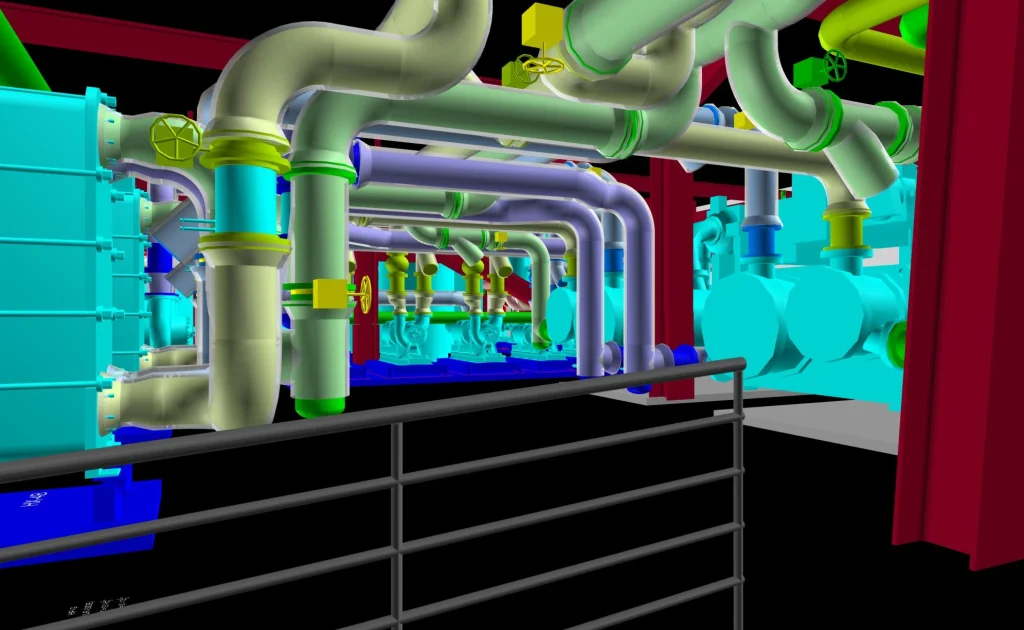Sustainability has become a cornerstone of contemporary construction, prompting the integration of eco-friendly practices and advanced technologies. In this landscape, MEP Mechanical, Electrical, Plumbing services play a pivotal role in driving sustainability within the construction industry. Let’s delve deeper into how MEP services contribute to sustainable construction practices and the broader impact they hold.
Understanding MEP Services
MEP service encompass a wide array of critical systems vital for the functionality and efficiency of any building. These systems include heating, ventilation, air conditioning (HVAC), lighting, electrical, plumbing, fire protection, and more. Their primary function is to ensure a comfortable, safe, and functional environment within a structure.
Enhancing Energy Efficiency
One of the primary focuses of MEP service in sustainable construction is optimizing energy efficiency. HVAC systems, for instance, are pivotal in regulating indoor temperatures effectively while minimizing energy consumption. Integration of energy-efficient systems, like high-efficiency HVAC units and LED lighting, significantly reduces the overall energy demand of a building.
Implementing Renewable Energy Sources
MEP services facilitate the incorporation of renewable energy sources into building designs. Through the installation of solar panels, wind turbines, or geothermal heating systems, buildings can generate their own sustainable energy, decreasing reliance on conventional power sources and reducing the carbon footprint.
Water Conservation and Management
Plumbing systems in MEP services are tailored to conserve water through innovative fixtures and water-efficient designs. Low-flow faucets, water-saving toilets, and rainwater harvesting systems are integrated into buildings to minimize water wastage, contributing to sustainable water management.
Ensuring Indoor Air Quality
The quality of indoor air significantly impacts occupant health and comfort. MEP service include sophisticated ventilation systems that promote proper air circulation, filtering out pollutants and enhancing indoor air quality. Additionally, these systems regulate humidity levels to prevent mold growth, ensuring a healthier living environment.
Adoption of Smart Technologies
Integration of smart technologies within MEP service enhances the operational efficiency of building systems. Building Management Systems (BMS) or Building Automation Systems (BAS) monitor and control MEP systems, optimizing their performance. These systems leverage data analytics to identify patterns and inefficiencies, allowing for proactive adjustments and energy savings.
Challenges and Innovations
Despite the significant strides made in MEP services for sustainability, challenges persist. These include the initial cost of implementing green technologies, complexities in retrofitting existing structures, and the need for skilled professionals capable of handling these advanced systems. However, ongoing innovations in materials, design approaches, and technology offer promising solutions to these challenges.
Innovations in MEP Service
Advancements in MEP service have paved the way for innovative solutions that revolutionize sustainable construction. Smart MEP technologies, for instance, enable buildings to adapt to changing environmental conditions. These systems utilize sensors and data analytics to automatically adjust lighting, temperature, and ventilation, optimizing energy usage while maintaining comfort levels.
Integration of Building Information Modeling (BIM)
BIM has emerged as a game-changer in the construction industry, and its integration with MEP service is no exception. BIM allows for comprehensive digital modeling of MEP systems, facilitating efficient design, clash detection, and accurate cost estimation. This technology streamlines the installation process, minimizes errors, and maximizes the efficiency of MEP systems.
Lifecycle Analysis and Building Performance
MEP service contribute significantly to a building’s lifecycle analysis. Through energy modeling and simulations, MEP engineers can predict a structure’s energy consumption, helping developers make informed decisions about system design and material selection to reduce long-term operational costs and environmental impact.
Regulatory Compliance and Green Certifications
Governments worldwide are enforcing stringent regulations and standards to encourage sustainable construction practices. MEP service ensure compliance with these regulations, such as energy codes and green building certifications like LEED (Leadership in Energy and Environmental Design) or BREEAM (Building Research Establishment Environmental Assessment Method). These certifications acknowledge buildings that meet specific sustainability criteria, further incentivizing sustainable construction.
The Impact on Occupant Well-being
Beyond the environmental benefits, MEP service significantly impact occupant well-being. Comfortable indoor environments foster productivity, improve health, and enhance overall satisfaction for building occupants. Properly designed MEP systems regulate temperature, humidity, and air quality, creating spaces conducive to well-being.
Collaborative Approach and Industry Trends
The drive for sustainable construction has led to increased collaboration among architects, engineers, contractors, and developers. This collaborative approach integrates various disciplines early in the design phase, fostering innovative solutions that prioritize sustainability. Moreover, emerging trends like net-zero energy buildings and the circular economy further underscore the importance of MEP service in achieving sustainable construction goals.
Conclusion
MEP services stand as the backbone of sustainable construction, spearheading efforts to minimize environmental impact while enhancing comfort and functionality in buildings. ENGISOFT ENGINEERING – BIM Staffing & BIM Services. Their integration and continuous innovation not only drive efficiency but also align with the global movement towards environmentally conscious practices in construction.

